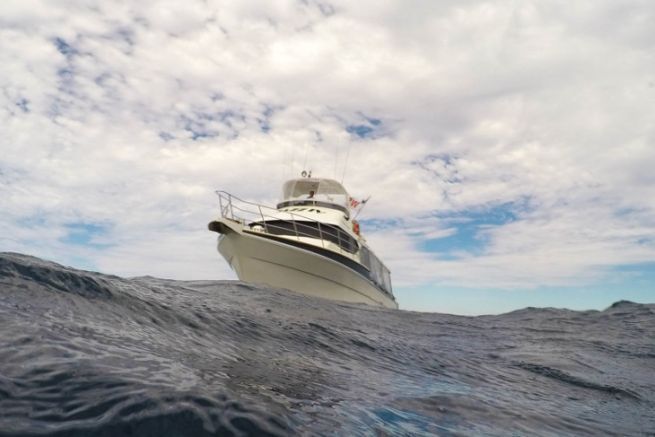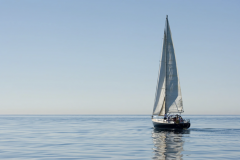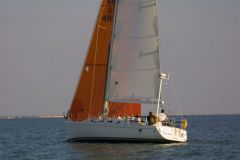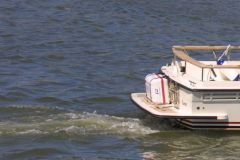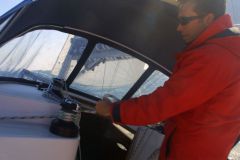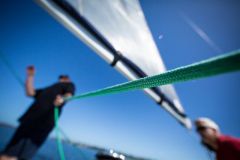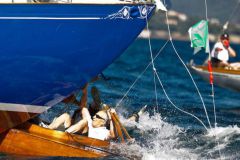A boat without speed will not stay upwind. In fact, a boat without speed will systematically "avoid" (rotation movement on itself) and position itself across the wind more or less quickly depending on the shape of its hull, the windwardness of the overhead structures (cabin, freeboard height, etceuros) and of course the wind strength. Let's study this phenomenon and its consequences for the boat's handling.
Why does a boat with no headway automatically position itself across the wind?
In reality, the phenomenon is quite simple to understand. When you break the headway in the wind, the boat will be "pushed back" but it will immediately encounter water resistance on the stern which creates a rotation point. The boat "hesitates" and then starts to avoid on port or starboard.
What determines the turning edge depends mainly on the direction of the boat in relation to the wind axis at the moment the headway is broken. But the rotation can also be due to a change in wind direction, for example when a gust of wind passes by at that moment.
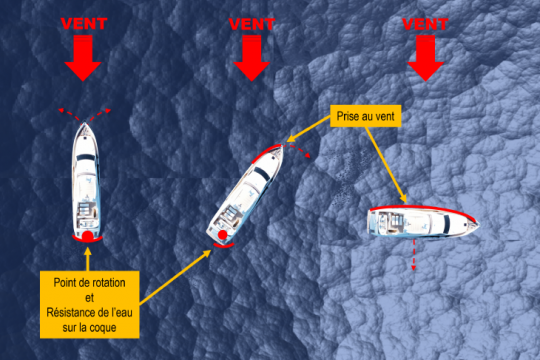
The boat then accentuates its avoidance because the wind "leans" on the superstructures and in particular on the front part of the hull whose freeboard is often higher than the rest of the hull and thus offers more grip to the wind.
Once the boat is "beam to windward", the superstructure's windage is distributed over the whole boat in a position of equilibrium: the boat's movement is stabilized but nevertheless it drifts with respect to the wind.
Do all boats react in the same way?
The positioning of the boat across the wind is "universal" and concerns all vessels from the smallest to the largest. However, there are some particularities depending on the boat. The shape of the hull and the windward grip (often called dunnage) is thus a determining factor in the speed of the evasive movement:
- Smaller motorboats (inflatables, open hulls and especially tiller boats) are much more sensitive to this phenomenon because they have little "wetted" surface area compared to the superstructures and sometimes they have no other anti-drift plane than their outboard motor or rudder placed far back on the hull. Note that the final position of a motorboat with a rudder is not really across the wind but often at 100° - 120° to the wind.
- Sailboats (sails lowered) on the other hand have less windage, a larger wetted surface and a keel, which will slow down the avoidance. On the other hand, a sailboat with no headway, with sails hoisted and furling or in a dry cape, will react much more quickly to the avoidance.
The initial position of the boat in relation to the wind and the relative strength of the wind are also parameters to be taken into account:
- A "downwind" boat whose headway is broken will also position itself across the wind, but this time it will take a long time to do so. The boat is pushed forward by the wind and the point of rotation, which this time is on the bow, will meet less "resistance" on the water since the hull is precisely designed to offer the least possible resistance to the forward motion
- The ratio "wind force" / weight-displacement of the boat also has an important impact on the speed with which the boat will be positioned across the wind: the heavier and more loaded a boat is, the more wetted surface it has and the longer it will take to avoid.
What can be the consequences on the safety of the boat?
A boat with no headway (e.g. engine failure) that is set against the wind will also be set against the waves, which can have an immediate impact on the comfort of the passengers and even on their safety if the sea is very rough. To avoid this and to put the boat back into the wind and the waves, the good reflex of the skipper should be to drop the anchor if the depth allows it. If there is too much depth, the other possibility is to set a floating anchor, which will also have the effect of putting the boat back in line with the wind and the waves, which will be more comfortable and safer.
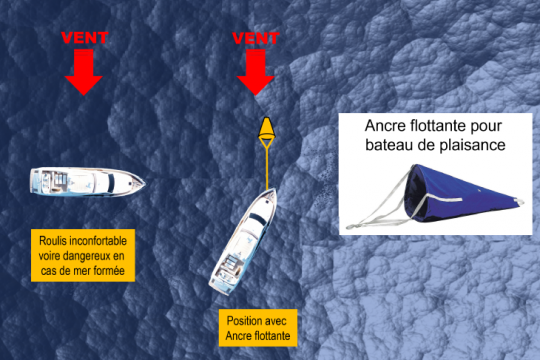
What are the effects on your maneuvers?
The consequences on the maneuvers can be annoying in particular for the most sensitive boats when the wind is strong:
The trunk is taken "upwind" and this maneuver is therefore one of the most sensitive to this phenomenon. A perfect approach in line with the wind as well as the right rudder when breaking the boat's headway can often solve many complications. However, there are other techniques for taking the trunk, which allow you to use the phenomenon rather than suffer from it, and these will be discussed in a future article.
Docking "into the wind" can also complicate the maneuvering of sensitive boats (for example, motorboats with a tiller). In this case, it may be wise to "break the codes" and consider a "downwind" berthing if possible: the boat can be just as maneuverable but at a very low speed and will need just a little more power to break its headway.
